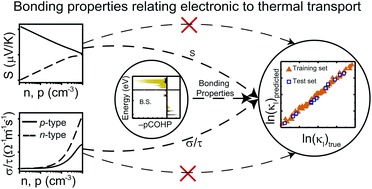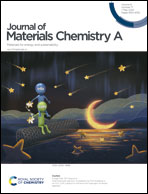Unraveling the role of bonding chemistry in connecting electronic and thermal transport by machine learning†
Abstract
Electronic and thermal transport in materials originate from various forms of electron and ion interactions. Despite the overlapping origin, there is lack of clear connection between these two transport properties. Using machine learning, we establish a relationship between seemingly independent electronic and thermal transport properties. Bonding characteristics, which determine the band structure and at the same time also control the anharmonicity, connect these transport properties. Using bonding characteristics driven structural attributes along with the Seebeck coefficient and electrical conductivity as descriptors, we developed a highly accurate machine learning model to predict the lattice thermal conductivity. Among the descriptors used in this model, bond distance in conjunction with electronic transport properties seamlessly partitions the dataset as a function of variation in the value of lattice thermal conductivity. The empirical formula obtained from non-linear compound descriptors further substantiates the role of bonding attributes in establishing the connection. Additionally, the independent prediction models for the Seebeck coefficient and electrical conductivity involve only elemental and bonding descriptors, thereby negating the need for expensive DFT calculations. Our work unravels the potential of machine learning in discovering the physical connections between otherwise uncorrelated electronic and thermal transport properties.

- This article is part of the themed collection: Editor’s Choice: Machine Learning for Materials Innovation


 Please wait while we load your content...
Please wait while we load your content...